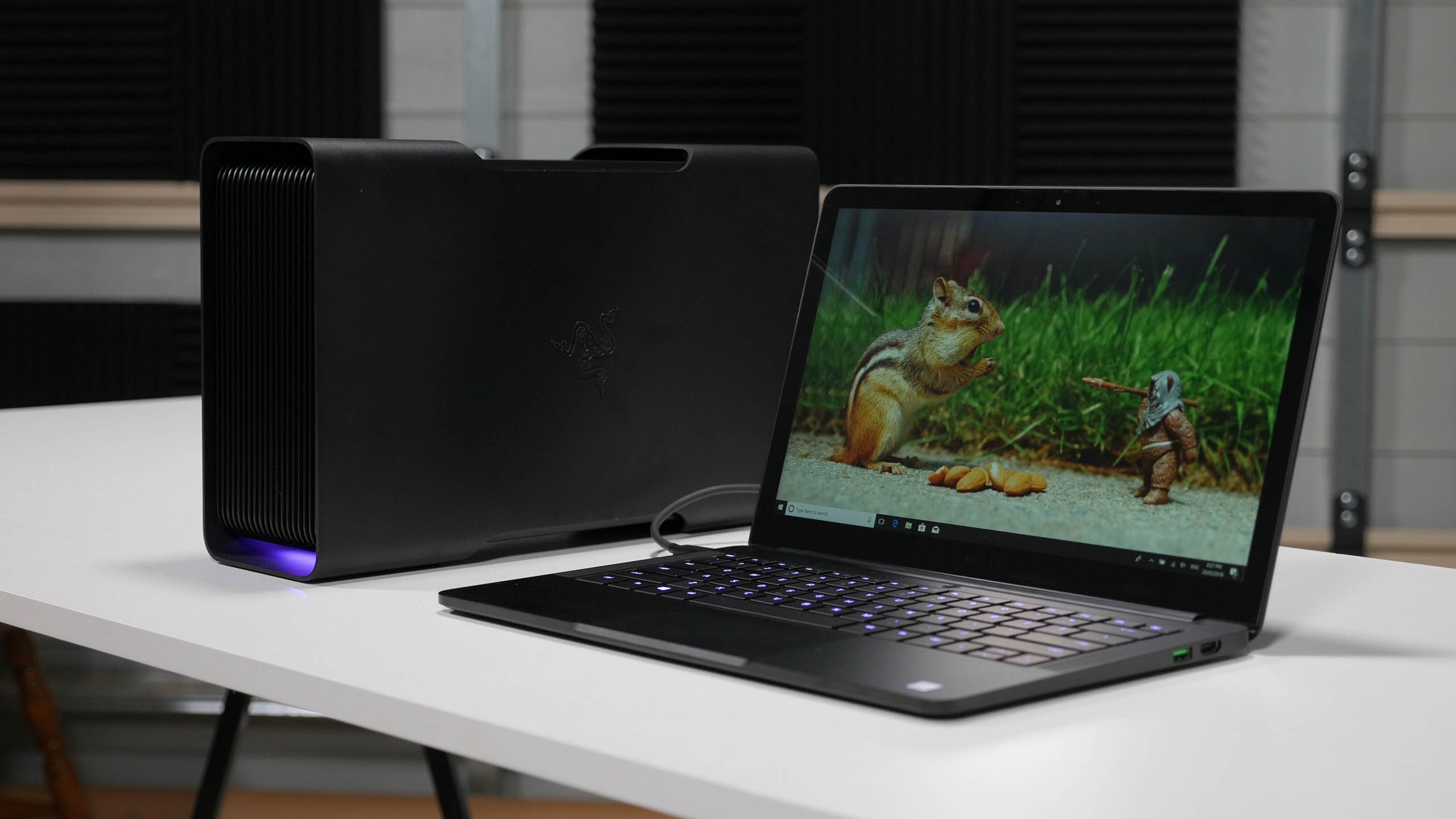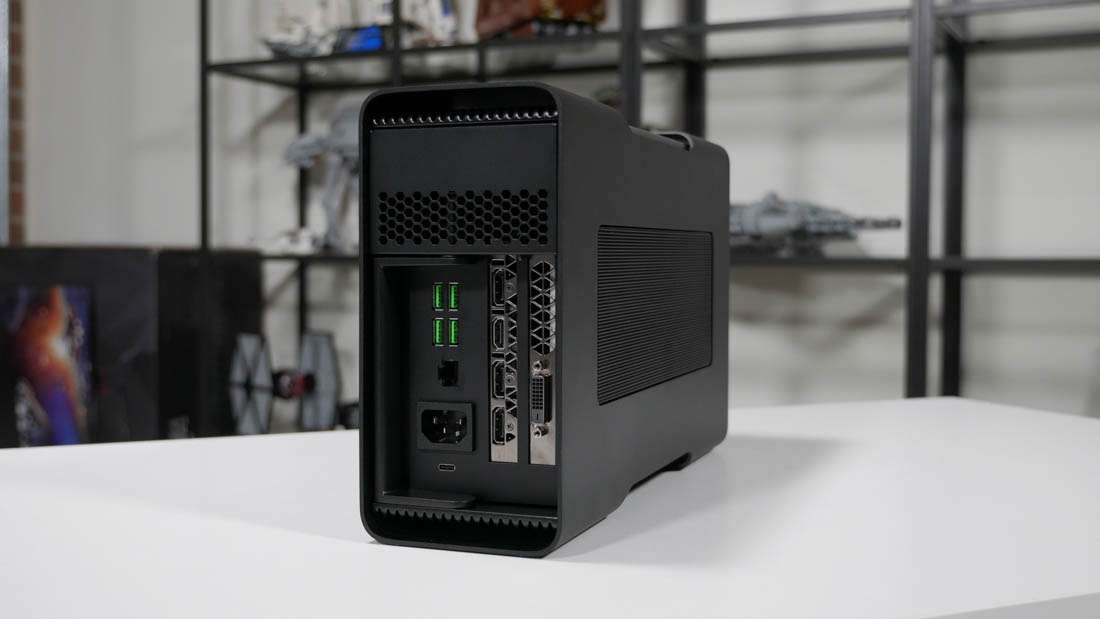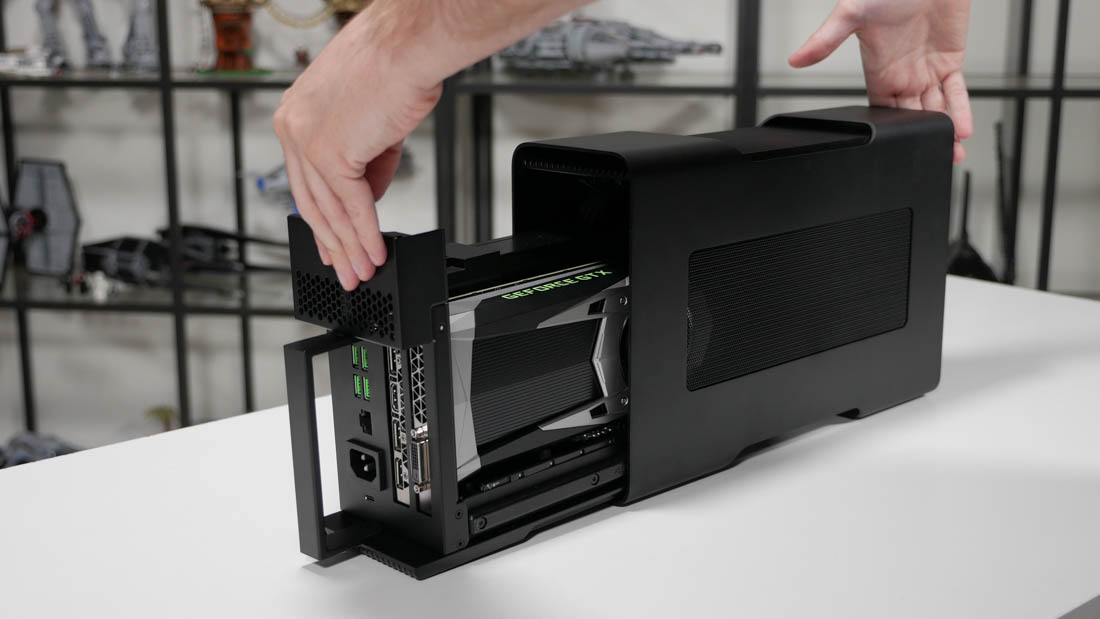Razer Core V2
Alongside the new Blade Stealth, Razer also launched a new external graphics enclosure, the Core V2. Razer heavily markets the Core in conjunction with the Blade Stealth as the best solution for gaming at home and portability on the go, and this new version attempts to address some of the issues with the first iteration.
Like its predecessor, the Razer Core V2 is an empty external graphics enclosure; in other words, you'll need to purchase a graphics card separately. This is a bit different to the Aorus Gaming Boxes we've reviewed previously, which included their own GPUs, however the Core V2's no-installed-GPU approach does allow you to buy whatever GPU fits within your budget, or you could even install a spare graphics card you have lying around.
The Core V2 attaches to laptops via Thunderbolt 3, just like most eGPUs, and it's not just restricted to Razer laptops. Despite the advertising on their website, the Core V2 does work with most Thunderbolt 3-equipped laptops provided eGPU support is enabled. Those with Razer laptops can take comfort that any modern Razer laptop with Thunderbolt 3 is known to work.
As this is a new version, let's go through the differences between the Razer Core V2 and its predecessor that launched a few years back. The key change is the move to a dual-Thunderbolt 3 controller, which sees the PCIe slot for the graphics card attached to one controller, while the USB ports and Ethernet jack get a separate controller. Both controllers do eventually funnel down into the one Thunderbolt 3 stream and cable, but Razer claims the dual-controller setup allows everything to function more reliably than they did in the past.
The internals of the case have also been redesigned such that the Core V2 is now compatible with a larger range of graphics cards: literally. The GPU area is more than a centimetre taller than in the previous Core, and can now accommodate any GPU that's less than 14.5 cm tall, 4.3cm wide, and 30cm long. I'll talk more about the GPU installation process in a moment.
As the Core V2 is designed to fit most graphics cards on the market, the unit itself is quite large, at least in comparison to the compact Aorus Gaming Boxes. It's not the biggest eGPU enclosure I've seen, but it dwarfs the Gaming Box in both size and weight. This is an enclosure you'll want to keep on your desk, while the Gaming Box could be quite easily transported around if need be.
The build quality, like the first iteration, remains outstanding and in line with the metal chassis Razer uses for their laptops. The largest section of the exterior is a single piece of machined, powder-coated metal and it's complemented well by large fins and vents along most edges. The seamless integration of these necessary cooling components gives it that premium finish you'd expect from a Razer product.
As far as fans are concerned, there are a couple included with the Core V2 along the bottom edge, drawing air from a gap along the bottom and providing cool air to the power supply and graphics card. The GPU also gets a large vent along the side, which makes the Core suitable for both blower and open air coolers.
Did I mention the Core V2 has RGB lighting? Well it wouldn't be a Razer product without it: there's an RGB LED strip illuminating the graphics card on the side, along with another strip at the front for some sneaky highlights to what is otherwise a stealthy front panel.
Port wise, the Core V2 comes with Thunderbolt 3 for connecting to your laptop or other device of choice, along with a four-port USB 3.0 hub and Gigabit Ethernet. Considering a lot of ultraportables simply don't have the space for wired networking, it's nice to get an Ethernet port on the Core.
Installing a graphics card is ridiculously easy with the new design of the Core V2, and completely toolless. Simply flip out the handle on the back and slide out the interior section. From there, remove the port cover, slot in the GPU, attach the power cables (there's support for up to two 8-pin cables), and screw in the GPU using the thumbscrew. Slide the interior back inside, flip back the handle, and it's good to go. The GPU is also very easy to remove thanks to the large lever Razer has included just under the PSU.
Speaking of the PSU, the unit included here is rated for 500W and Razer lists support for up to 375W of GPU power. Theoretically you could use a monstrous power sucking dual GPU card in here, like the AMD Radeon Pro Duo, though you'd be much better off with a good single GPU card instead.
Of the eGPUs I've used, this is the most elegant and easy way to slot in a graphics card, and even the internal layout is great.






